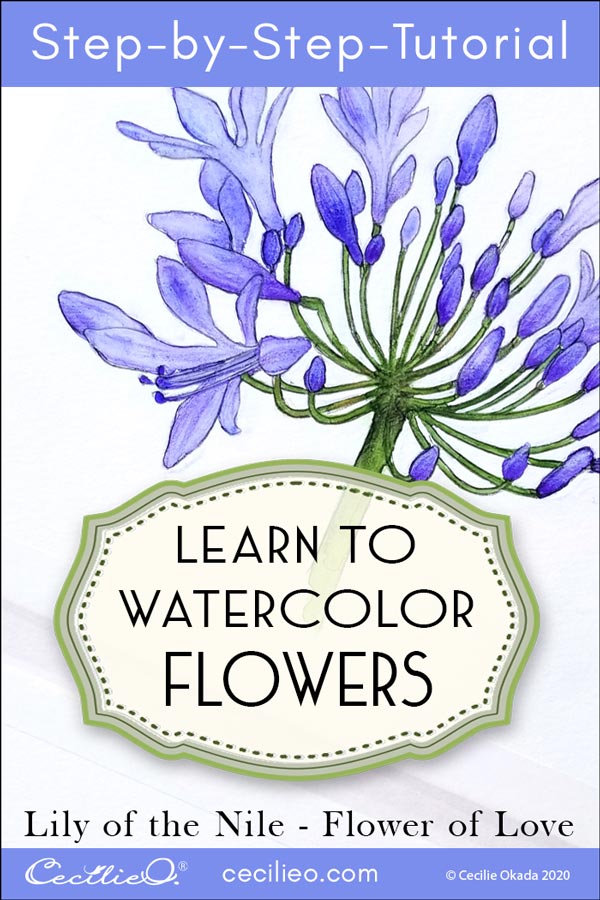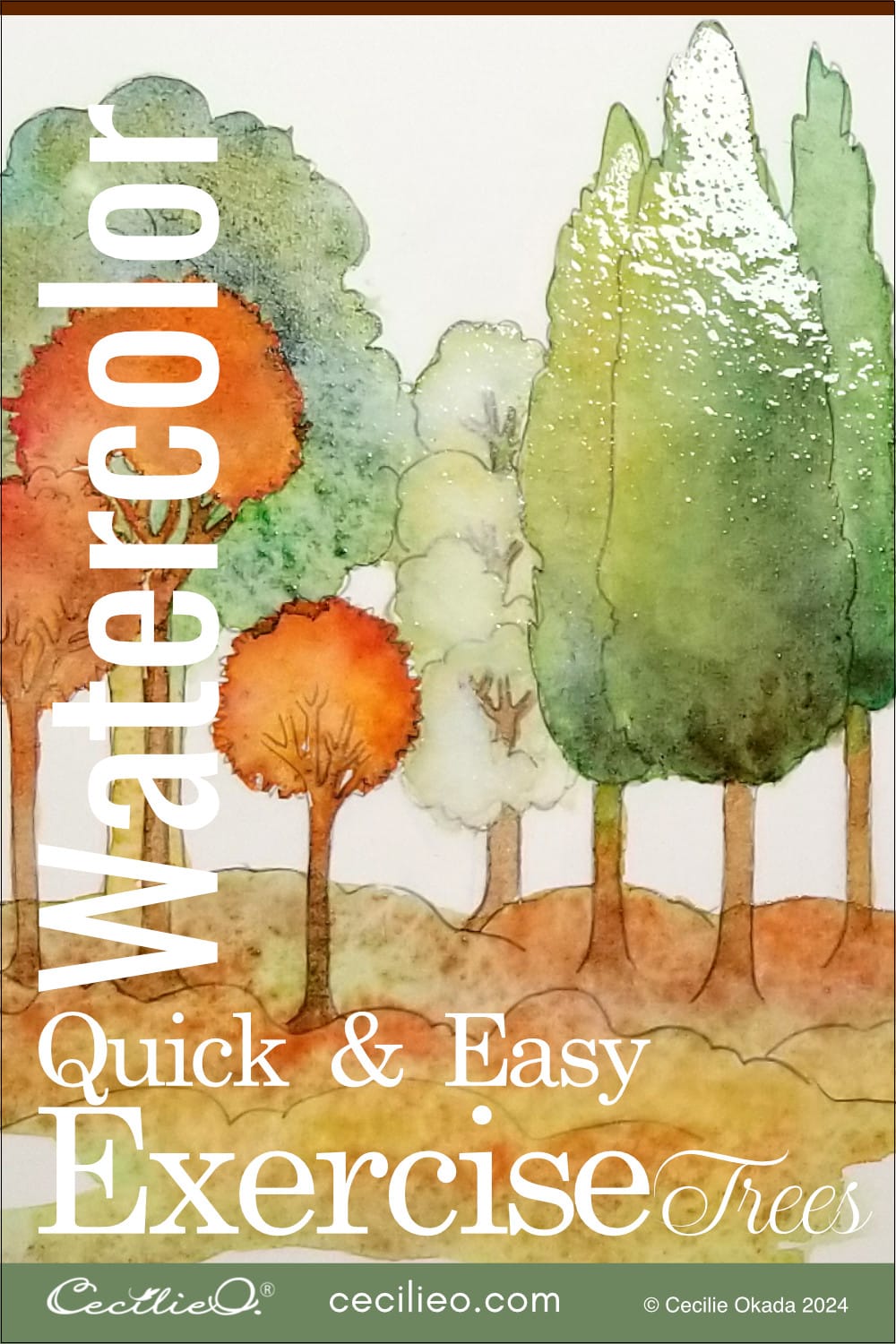
Lily of the Nile is neither a lily nor from the Nile, but it certainly deserves its exotic name. Nature has painted the sprawling crown of flowers in a delicate, light violet. Flowing shades of violet can easily be created for watercolor flower painting. I will show you how in this step-by-step tutorial.
Painting the flower with watercolor is a smooth process, but the prospect of drawing may be a bit daunting. Lily of the Nile has multiple stems, flowers, and buds. So please don’t hesitate to download my drawing. I’ve made it available so that you can focus on learning to watercolor. Learn how to trace line art onto watercolor paper.
The photograph was taken in a cozy, small village near the sacred Koyasan mountain here in Japan. I was visiting a hot spring. Armed with my camera on an early morning walk, a friendly old lady decided to show me around. This photo is from a lovely, private garden.

The meaning of Lily of the Nile
The botanical name for Lily of the Nile, or African Lily, is Agapanthus. Agape means love in Greek, and anthos means flower. So there you have it; it’s the flower of love. Queen Victoria thought it a brilliant idea to dedicate this flower to true love.
I think the Nile connection does make sense, even though Lily of the Nile originates in South Africa, not Egypt. There is this famous book from 1856 called “The Grammar of Ornament”. It has beautiful illustrations of ancient, Egyptian ornament, based on the lotus flower. With a little bit of imagination, can you see Lily of the Nile instead?
Let’s start to watercolor.
Learn about my drawing process
Drawing flowers can make you very tired. It’s always the multiple petals to contend with. How petals are arranged makes one type of flower different from the other. Then you have the issue of perspective.
If I try to draw a perfect flower directly onto my watercolor paper, I usually get lost. I start erasing all the wrong lines and angles and get frustrated. Redrawing.
If, on the other hand, I draw with a completely different mindset, I get it right. Perfection is boring. Photographs do a better job than my artwork. So what do I do instead?
I look at the photo and let my hand loose. Without paying too much attention to getting it right or wrong. I draw lines here and there, let my hand waltz around on the paper. Where the lines look right, I strengthen them. I probably won’t end up with a beautiful sketch, but it will be a flower that looks alive.

I then place a tracing paper over the sketch and draw pretty, clean lines. In this way, the main outline emerges from the sketch. This is the drawing you can download and trace onto your watercolor paper. I do the same; I trace my own drawing onto watercolor paper.
(If you are observant, you notice that one petal is missing on the big left flower. This is corrected for the drawing to download. On my painting, I corrected when I discovered along the way).
Step 1: Watercolor the violet flower petals and the green stems
To get the right kind of violet, mix ultramarine blue with a little bit of violet. You will have a violet that is skewed towards blue. The fresh green is made by mixing green with ochre.

Usually, I advise to paint with water first and then add watercolor. In this case, I use a different approach. The reason is that it’s easy to make a mess with so many small flowers and buds next to each other.
Instead, paint a few flowers and buds at a time. Then you drop a little bit of water with your brush onto the color. This will spread the color in interesting ways.

Look at the photo to see where you need to add more pigment. The buds are darker. But don’t try to be exact. Move the pigment around in a way that looks beautiful to you.

Next up, you paint stems with green. Add some ochre too. It’s ok if the colors spill.

Step 2: Creating volume with colored pencils
When the watercolor is all dry, you can draw on top of the painting. First, redraw the entire outline with a sepia-colored pencil.
Use a white, aquarellable pencil to build up the light parts of the flowers. This kind of pencil is greasy and sticks very well. Regular white pencil won’t make much of a difference; only a faint white. This is a cheaper alternative. It is waterproof and does the same job.
After applying the white color, use a dark violet pencil to create an impression of volume. And to spice up the dark buds.

Step 3: The finishing touch
I needed to repaint some of the stems. In some places, I touched up further with green and ochre-colored pencils.
Since I’ve spilled the colors in a way that’s not all that pretty, I decided to clean up the outline with white gouache. I used a fine brush to get in-between the thin stems. Lastly, I drew over some of the outlines again with sepia.
My Lily of the Nile watercolor is finally done to satisfaction.

My best wishes to your creativity and your watercolor flower painting!








